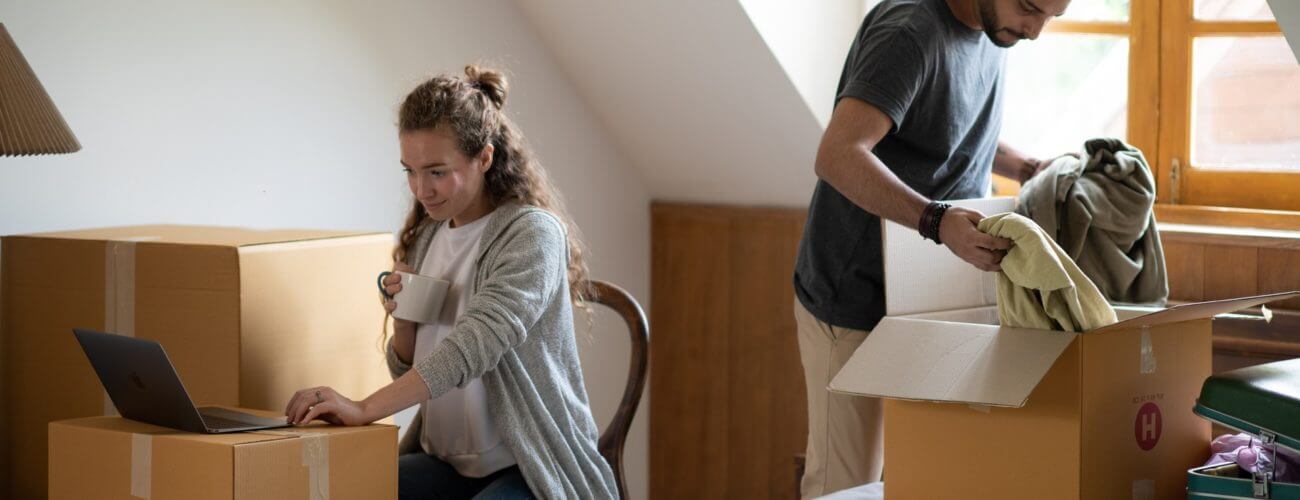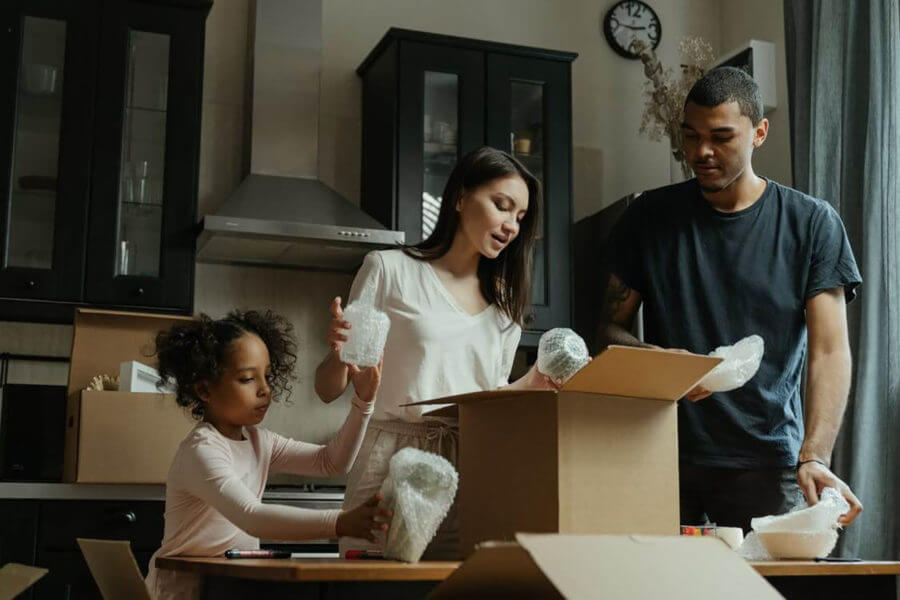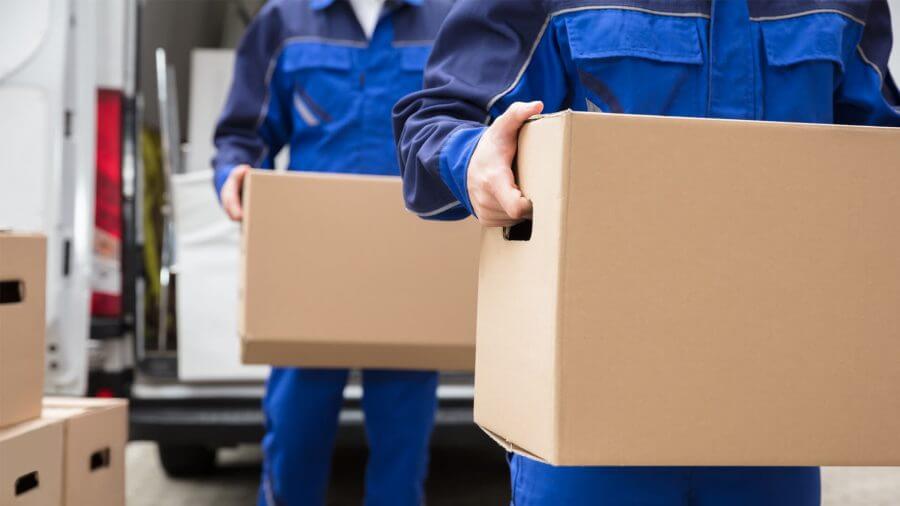

How to Pack for a Move Like a Pro
Posted in How-to on August 4, 2023
Moving soon and feeling overwhelmed? Don’t fret! We’re here to turn that chaos into control. Learn how to pack for a move like a pro with our top tips to streamline your relocation process.
To pack for relocation like a pro, you will need a systematic approach – from gathering supplies to efficiently boxing up different types of items. You will need to protect fragile and valuable belongings, organize electronic devices, and prepare your home for relocation day. You should also note the importance of having an essentials box and overnight bag and understand the benefits of hiring professional movers.
Purge and Prioritize – Streamlining Your Belongings
Decluttering is your secret weapon when it comes to moving across the country (especially if you plan to move to a smaller home). It allows you to focus on what’s truly important, making your relocation more manageable and less expensive. Plus, it offers a sense of refreshing new beginnings in your new home, leaving the past behind and bringing only what brings you joy and utility.
Here’s a practical approach to help streamline the process and channel your inner Marie Kondo – categorize your belongings into the following groups:
- The group of what to keep – These are items you love, use regularly, or those with high sentimental value. They’re coming with you to your new home.
- The group to donate – Items that are in good condition but no longer needed or wanted can find a new home and help those in need.
- The group of items you plan to sell – Have some items that are still valuable but no longer serve you? Turn them into cash by selling online or hosting a garage sale.
- The group to get rid of – Items that are broken, worn out, or simply unusable should be responsibly discarded.
Remember, ‘how to pack when moving’ starts with deciding what to pack. Streamlining your belongings saves time, effort, and relocation costs, making your relocation smoother and more efficient.
Strategize and Systematize: Create a Plan
To make the packing process less daunting and more efficient, it’s best to devise a systematic plan and organize everything accordingly. This process involves not just randomly stuffing items into boxes but rather adopting a structured method that streamlines your relocation and reduces stress.
Start by surveying your home and estimating the amount of work needed to pack each room. This way, you’ll have a rough idea of how much time you should allocate per room. Keep in mind that some spaces will require more time than others, depending on the number of items and their complexity. Then, decide on a relocation date and work backward to establish a packing schedule. Avoid leaving everything until the last minute. Spreading the process out over a few weeks will help keep the task manageable and less overwhelming.
Developing a Systematic Approach to Packing
While developing a plan, you should prioritize your items based on their usage. Pack items that you don’t frequently use first, leaving essentials until the last days. Remember to label each box clearly with the room it belongs to and a general description of its contents. This makes unpacking easier and allows you to find necessities quickly in your new home.
Room-By-Room Packing Checklist and Timeline
Starting with rooms that are least frequently used is a good idea since you won’t miss the items stored there as much. These may include spaces like your garage, basement, or guest room. Plan to pack these rooms about a month before your moving date. Next on your schedule should be rooms that contain items you use but not on a daily basis. This could be your living room and dining room. Start boxing up these rooms about three weeks before the relocation date.
Now, it’s time to tackle the more frequently used rooms. This might include your home office or children’s rooms – schedule handling these about two weeks before the relocation. Lastly, you will pack the most frequently used spaces, such as the kitchen, all the bathroom items, and your own bedroom. These should be packed a few days before the relocation. You will need to be strategic in this phase, making sure you keep essential items readily accessible.

Tools of the Trade – Get Supplies
Getting the right protective supplies is crucial to protect your items during the relocation. Here is a comprehensive breakdown of materials you should consider acquiring:
- Boxes – Your boxes are the foundation of your strategy. Ensure you have an assortment of sizes to accommodate different types of items. Small boxes work well for heavier items like books or canned goods. Medium and large boxes are suitable for lighter, bulkier items such as blankets, pillows, or kitchenware. Also, ensure you have as many boxes as you need.
- Packing tape – This is another essential item. It not only seals your boxes but also reinforces them. Consider high-quality tape that is durable enough to secure your boxes. You may also need a tape gun to facilitate the application.
- Bubble wrap – Bubble wrap provides cushioning for fragile items such as glassware, china, or artwork. It’s versatile and offers the necessary protection to keep your breakables safe during the relocation.
- Packing paper – This is a safer alternative to newspaper, which can leave ink stains on your items. It’s ideal for wrapping dishes, glassware, and other small to medium fragile items.
- Permanent markers – Permanent markers are used for labeling your boxes. Clear and precise labels specifying the contents of each box and the room they belong to will make unpacking at your new place much easier.
- Furniture covers – Furniture covers or blankets protect your furniture from dust, scratches, and damage during the relocation.
- Mattress bags – These protect your mattress from dirt, dust, and dampness while in transit.
- Zippered plastic bags – These are handy for keeping small parts (like furniture screws) together. They can also be used for protecting small, loose items.
- Specialty boxes – For some items, you may need specific types of boxes. For instance, wardrobe boxes for hanging clothes, picture or mirror boxes for artwork and large mirrors, or dish barrels for dishes and glassware.
Having these supplies at your disposal before you start boxing up can greatly facilitate your relocation process. Ensure that you’ve estimated correctly the amount of each supply you need, to avoid last-minute shopping trips that can disrupt your schedule.

How to Pack for a Move – Become a Tetris Master
Handling boxing up is akin to playing a game of Tetris. Just as you need to fit irregularly shaped blocks together efficiently in Tetris, you need to pack different shapes and sizes of items in your moving boxes while maximizing space and ensuring nothing gets damaged. Begin with the largest, heaviest items at the bottom, and gradually work your way up to lighter, smaller items. Don’t forget to fill gaps with bubble wrap or crumpled paper to prevent items from moving around.
Efficient Packing Techniques for Different Types of Items
Different items require different protection techniques. For instance, fragile items like glassware and delicate china need to be individually wrapped with paper or bubble wrap and placed in boxes with plenty of cushioning. Clothing can be left on hangers and placed directly into wardrobe boxes or rolled to save space in standard boxes or suitcases. When it comes to books, as they are heavy, they should be placed in smaller boxes to keep them manageable. Electronic devices should ideally be packed in their original packaging.
Maximizing Space and Preventing Damage
Now, you should think about how items can fit together. Place heavy items in smaller boxes and lighter, bulky items in larger boxes. Fragile items should have their own box with plenty of padding. When stuffing a box, fill it to the top. If there’s too much space, items can shift around, potentially leading to damage. Use paper, bubble wrap, or even small, lightweight items to fill the gaps.
Don’t Forget About Labeling
Labeling is a crucial aspect of packing for relocation. It helps ensure that boxes end up in the correct rooms in your new home, making the unpacking process smoother and quicker. Use a marker to clearly write the room name and the contents of each box. You might also consider using a color-coding system for additional clarity — for example, using a certain color marker for all boxes going into the kitchen, another color for the bedroom, and so on. Label boxes on the sides, not the tops, so you can identify them even if they’re stacked. Also, be sure to mark boxes containing fragile items with large, visible ‘FRAGILE’ labels.
Know How to Protect Fragile Treasures
Handling fragile and valuable items requires extra care and consideration. If you have items that are especially valuable, both monetarily and sentimentally, you may want to consider having them professionally packed or even transporting them yourself to ensure they are handled with the utmost care.
Items such as antique furniture, valuable artwork, or heirlooms may need custom crating for their protection. Jewelry, important documents, and small electronic devices are better off being moved with you personally. The same goes for extremely fragile items like musical instruments or glassware collections, which could be sensitive to temperature changes or need special handling.
Packing Electronics and Cables Is Also a Must
Start handling your electronics by backing up all necessary data. Then, if possible, place electronics in their original packaging as it was specifically designed to protect that item. If the original packaging isn’t available, choose a box that fits the device snugly. Place an ample layer of bubble wrap or anti-static material at the bottom of the box for cushioning.
When it comes to cables and accessories, organization is key. It’s easy to end up with a tangled mess of cables if they’re not properly managed during boxing up. First, it’s best to remove all cables from your devices to prevent damage. Refer to the user manual or take a picture before disconnecting any cables so you’ll remember how to reconnect them.
Wrap each cable individually using velcro cable ties or twist ties to prevent tangling. You could also use toilet paper rolls to keep them neat – simply write on each roll what the cable is for. For small accessories like remote controls, chargers, or other peripherals, consider using zippered plastic bags. Label each bag with a marker to indicate which device the accessories belong to.
The following video shows how to handle cables in a proper way so they don’t get damaged.
Ensure You Hire Movers to Help You With the Packing Process
Engaging professional movers can significantly streamline the whole relocation process. Their expertise and cross-country moving services enable them to handle a variety of items securely and efficiently. Plus, their tools and high-quality protective materials further safeguard your belongings.
Hiring cross-country movers can also save you a great deal of time, which is particularly beneficial if you’re juggling other responsibilities. Furthermore, unlike when you move on your own, professional long-distance movers bear the liability for any damage caused during the move. Before choosing a cross-country moving company, it’s key to seek recommendations, read reviews, and compare quotes from several companies. Ensure your selected company is licensed, insured, and experienced in your type of move.
Booking your movers in advance is crucial, especially during peak moving periods. Once you’ve chosen a service, communicate clearly about your requirements and expectations. By using professionals, you can concentrate on other facets of your move and enjoy a less stressful transition while they handle everything with their packing services and other solutions.

Essentials Box and Overnight Bag Are a Must
The importance of an essentials box and the overnight bag cannot be overstated when moving cross-country. Your essentials box should contain items you’ll need immediately after your move, such as toiletries, medications, a change of clothes, snacks, and important documents.
Similarly, your overnight bag should have all your personal necessities, including pajamas, a toothbrush, and a phone charger. Having these items close at hand means you won’t have to rummage through numerous boxes to find what you need during your first night in your new home.
Prepare for the Moving Day
Preparation is key for a smooth long-distance moving day. This involves finalizing everything and ensuring all boxes are properly sealed and labeled. If you have any last-minute boxing up, make sure it’s done before the movers arrive. Take time to create a moving day checklist to ensure all tasks are completed. This can include items like keeping important documents at hand, making a plan for pets or children, and having a clear route to your new home.
Prep Your Home for Movers
Clear any clutter from hallways and staircases to prevent accidents and ensure easy navigation for the movers. Protect your flooring with plastic sheeting or carpet protector film, especially if the weather is bad. Disconnect large appliances and remove any fixtures you’re taking with you. Lastly, be present to guide the movers, answer any questions, and oversee the process.

There Is a Way to Pack Like a Pro and Make the Move Easy
You can make your move not just manageable but truly easy. By following the systematic approach, leveraging the right supplies, employing smart packing techniques, and hiring professional movers, you can ensure a hassle-free relocation. Remember to pay attention to the details, from packing your electronics and delicate items carefully to having an essentials box and overnight bag ready for your first day in the new home.
Cross Country Movers is here to support you through every step of your moving journey. With our expert services, you can take the stress out of your relocation and focus on the excitement of starting a new chapter in your life. Why not contact Cross Country Movers today to find out how we can make your next relocation your easiest relocation?
FAQ
How Far in Advance Should I Start Packing for a Move?
Begin several weeks before your move, starting with infrequently used items. More essential items can be packed closer to the relocation date.
Should I Hire Professional Packers or Do It Myself?
This depends on various factors like the volume of items, time constraints, budget, and your comfort level with boxing up. Professional packers provide expertise and efficiency, but DIY packing can be more budget-friendly. Keep in mind that it can be overwhelming.
What Should I Do With Perishable Items or Plants?
For perishable items, try to consume as much as you can before the relocation and give away or discard the rest. Most moving companies won’t transport plants, so consider transporting them yourself or gifting them to friends.
Are There Any Specific Tips for Packing Clothes and Shoes Efficiently?
Roll clothes instead of folding to save space and reduce wrinkles. Pack shoes in their original boxes, use packing paper to protect them, and fill empty spaces in the box to prevent movement.
How Do I Pack and Transport Large or Bulky Items?
Large items should be disassembled if possible. Wrap each part in moving blankets or bubble wrap and secure it with tape. Professional movers can also assist with packing and transporting bulky items.
What Should I Do if I Run Out of Packing Supplies?
You can often purchase additional supplies from moving companies, home improvement stores, or online. For a more eco-friendly solution, consider using towels, blankets, and clothing for padding.
How Can I Ensure the Safety of Important Documents During the Move?
Keep important documents with you during the relocation. Consider using a fireproof document bag for added security. Also, creating digital backups of important documents is a good idea.
Is There a Specific Way to Pack and Protect Fragile Artwork or Mirrors?
Fragile items like artwork and mirrors should be wrapped in packing paper and then bubble wrap. Use a fitted picture box if possible, and fill any extra space with packing peanuts or paper to prevent movement. Mark the box as ‘Fragile’ and ‘This Side Up.’






